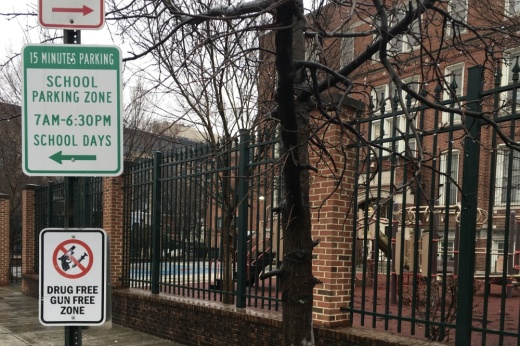The vote on the bills came 11 months after a gunman killed 19 students and two teachers at Robb Elementary School in Uvalde on May 24, 2022.
Making schools safer is a top legislative priority for Gov. Greg Abbott, House Speaker Dade Phelan and Lt. Gov. Dan Patrick. House lawmakers have proposed setting aside $1.6 billion for school safety in their 2024-25 state budget proposal, while the Senate proposed $1.3 billion. Lawmakers from both chambers will meet to negotiate the final budget before the legislative session ends in late May.
Strengthening schools
House Bill 3, by Rep. Dustin Burrows, R-Lubbock, passed with a 119-25 vote. The bill would increase communication and oversight between school districts and the Texas Education Agency. The TEA would be required to complete annual safety audits of each district’s campuses, including the examination of doors, vestibules and other security infrastructure to determine if an intruder would be able to gain access to the building.
If schools do not comply with security standards set by the TEA, students could receive grants to attend another district.
Burrows’ bill also provides each campus with $15,000 each year to spend on school safety initiatives, plus an additional $100 for each student who regularly attends school.
Each public and open-enrollment charter school would be required to have at least one armed school security officer on campus during regular school hours. Burrows said this would help make schools more secure and “reduce confusion in the midst of a crisis.”
According to the bill text, a school security officer could be:
- A school district law enforcement officer;
- A school resource officer;
- A school marshal;
- A law enforcement officer commissioned to work for a school district; or
- A teacher or other school employee who is trained and licensed to carry a handgun on campus.
“This will be a matter of not if, but when, a student gets ahold of a teacher’s gun,” said Rep. Ana-Maria Ramos, D-Richardson. “Even with the training required by HB 3, there are going to be deadly mistakes.”
Ramos cited a survey by the Texas American Federation of Teachers, in which 76% of K-12 school employees said they did not want to be armed at school. The survey was conducted in early June 2022, shortly after the Uvalde shooting.
“This is a false narrative that the bill arms teachers,” Burrows said.
State law already allows school employees to be armed on campus under the school guardian and school marshal programs. Both programs require staff to be licensed and trained, but school districts can determine the details of their own guardian programs, while the marshal program is based on guidelines from the Texas Commission on Law Enforcement.
The House also passed HB 13, by Rep. Ken King, R-Canadian, with a 125-21 vote. The bill would give armed teachers an annual stipend of up to $25,000. King said the stipend would be a part of a new “sentinel program,” which would follow TCOLE training requirements and include additional instruction on mental health and trauma-informed care.
All school employees who interact with students—such as teachers, nurses, counselors and administrators—would be required to complete a mental health training program focused on support for students who deal with mental health or substance use issues and “may pose a threat to school safety.”
HB 13 also creates a grant program to help districts enhance their safety infrastructure and meet TEA requirements. Schools could receive $10 million in grants each year.
If the bill is signed into law, Texans would vote on the option to create the school safety grant program during the November general election.
Cutting emergency response times
With a 145-0 vote, the House unanimously approved SB 838 on April 25. Filed by Sen. Brandon Creighton, R-Conroe, and sponsored by Rep. Shawn Nicole Thierry, D-Houston, the bill would add silent panic alert devices to all classrooms.
The devices would be used to immediately alert district officials and law enforcement of an active shooter. Thierry said they could also be used to get help during medical emergencies.
Public and open-enrollment charter schools would be required to put the panic buttons in all classrooms before the beginning of the 2025-26 school year.
In June, state leaders gave the TEA $17.1 million for a grant program to help school districts purchase panic alert systems. Thierry said 86% of Texas school districts had applied for funding as of April 24.
“It is the sad truth that our schools are the least secure governmental building, yet they hold our most vulnerable population,” Thierry said on the House floor. “As I stand [here] today, I am more secure than every child in public school.”
The panic alert bill was previously approved by the Texas Senate, so it now heads to Abbott’s desk to be signed into law. It is one of the first bills to reach this stage during this legislative session.





